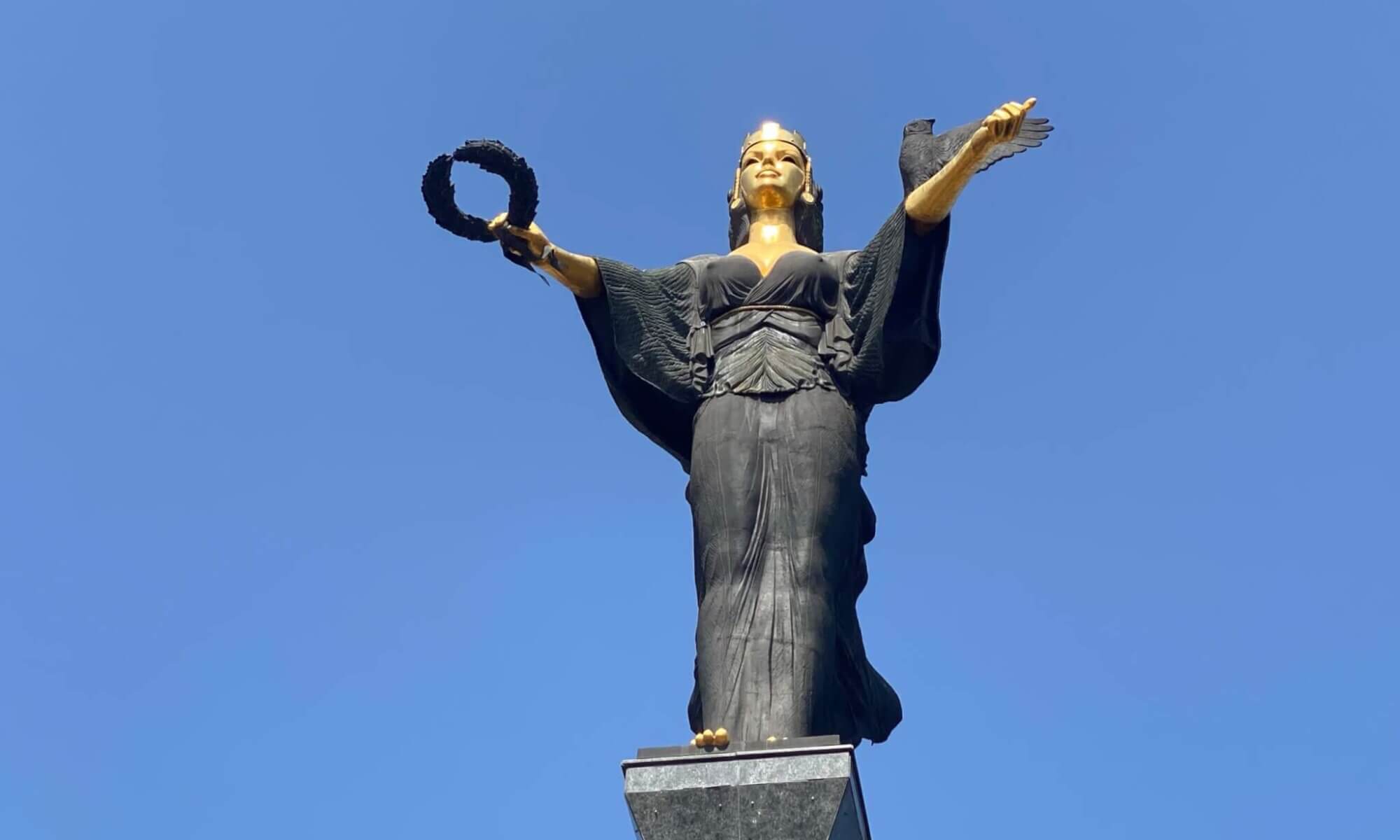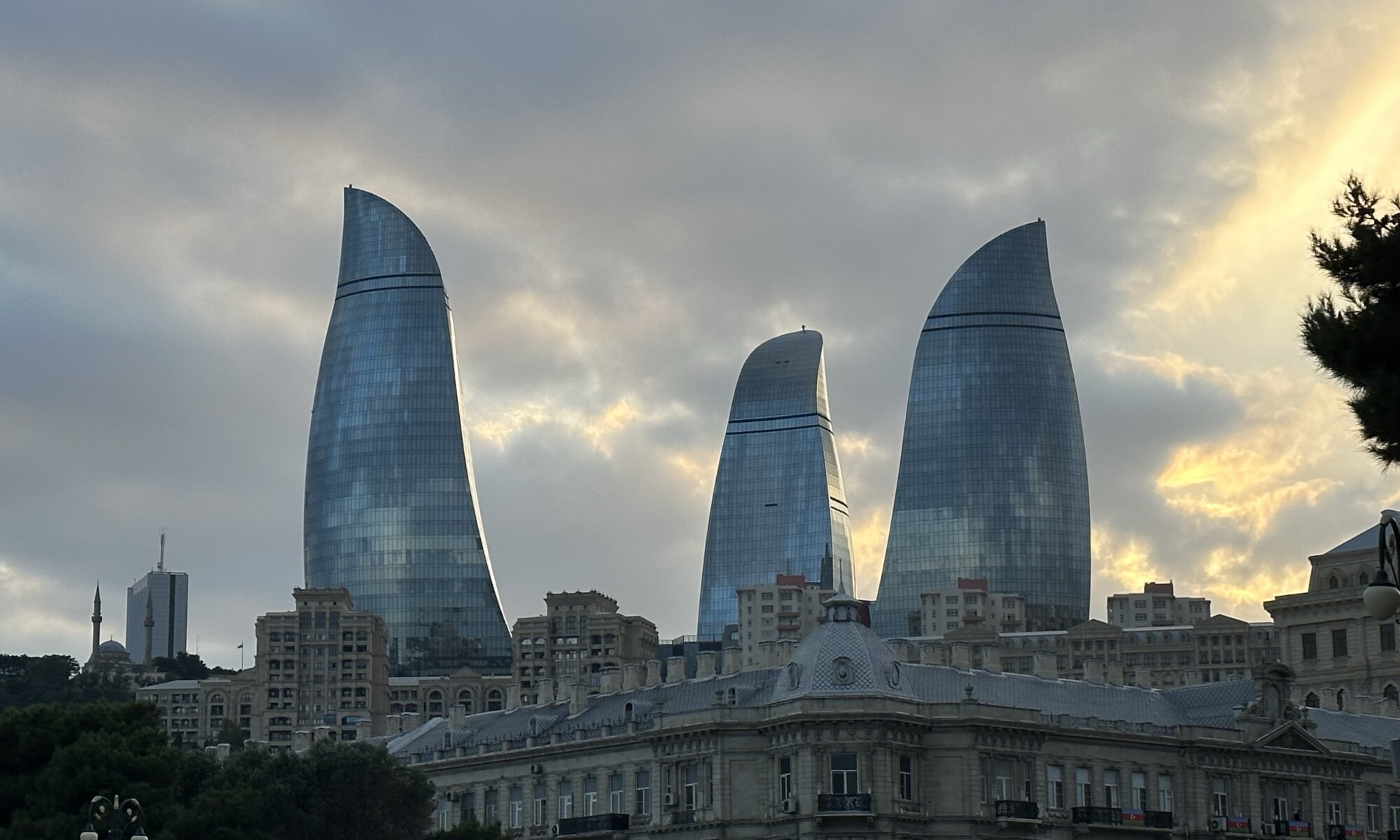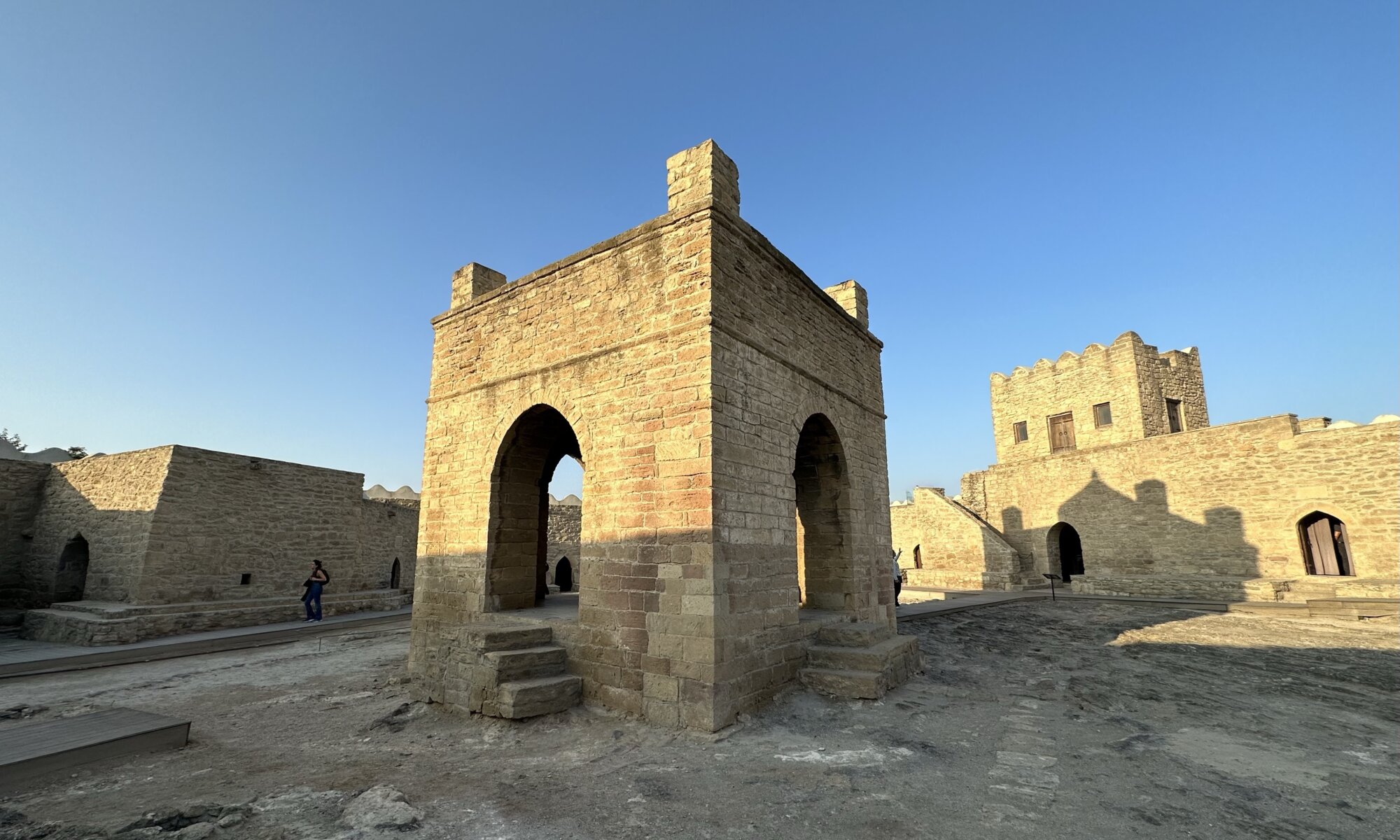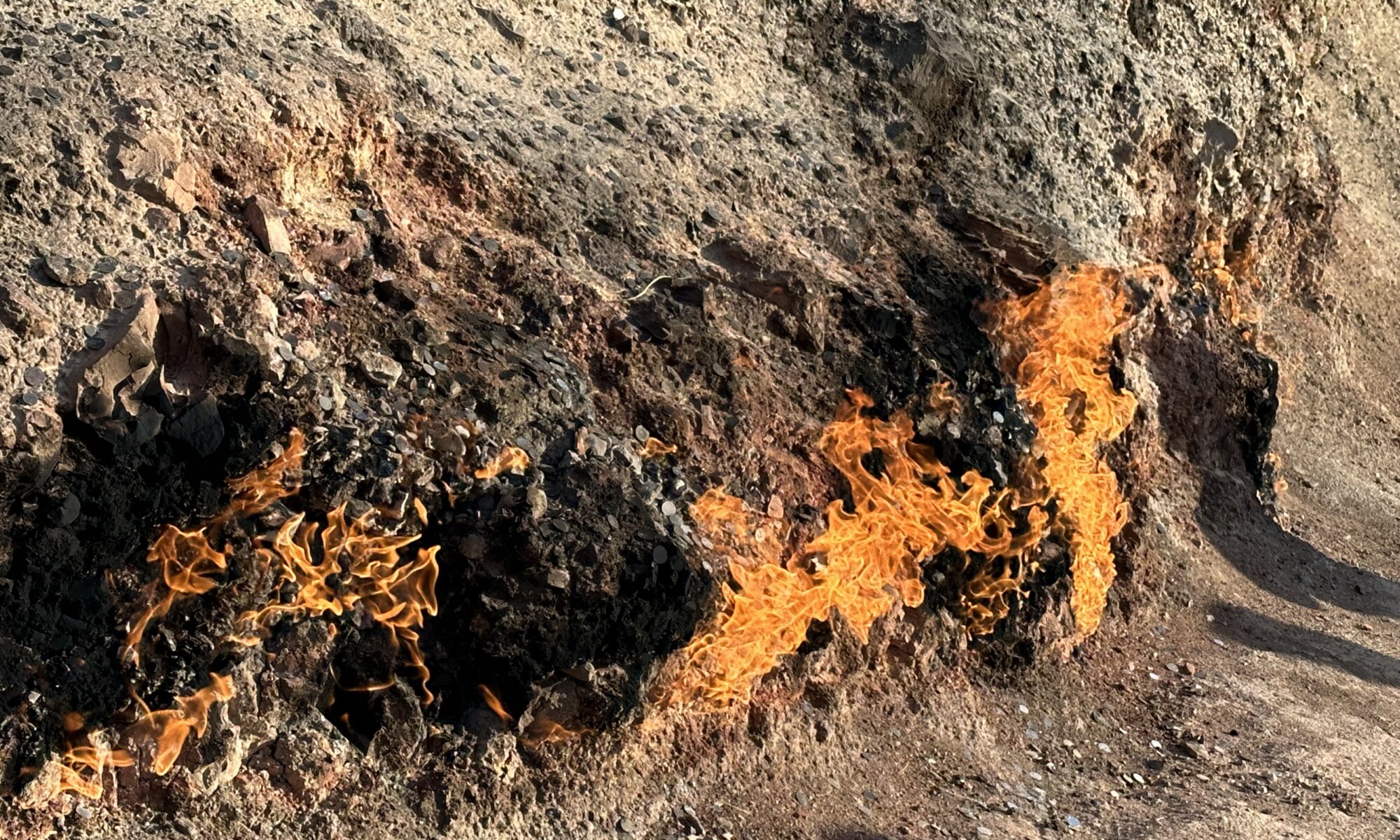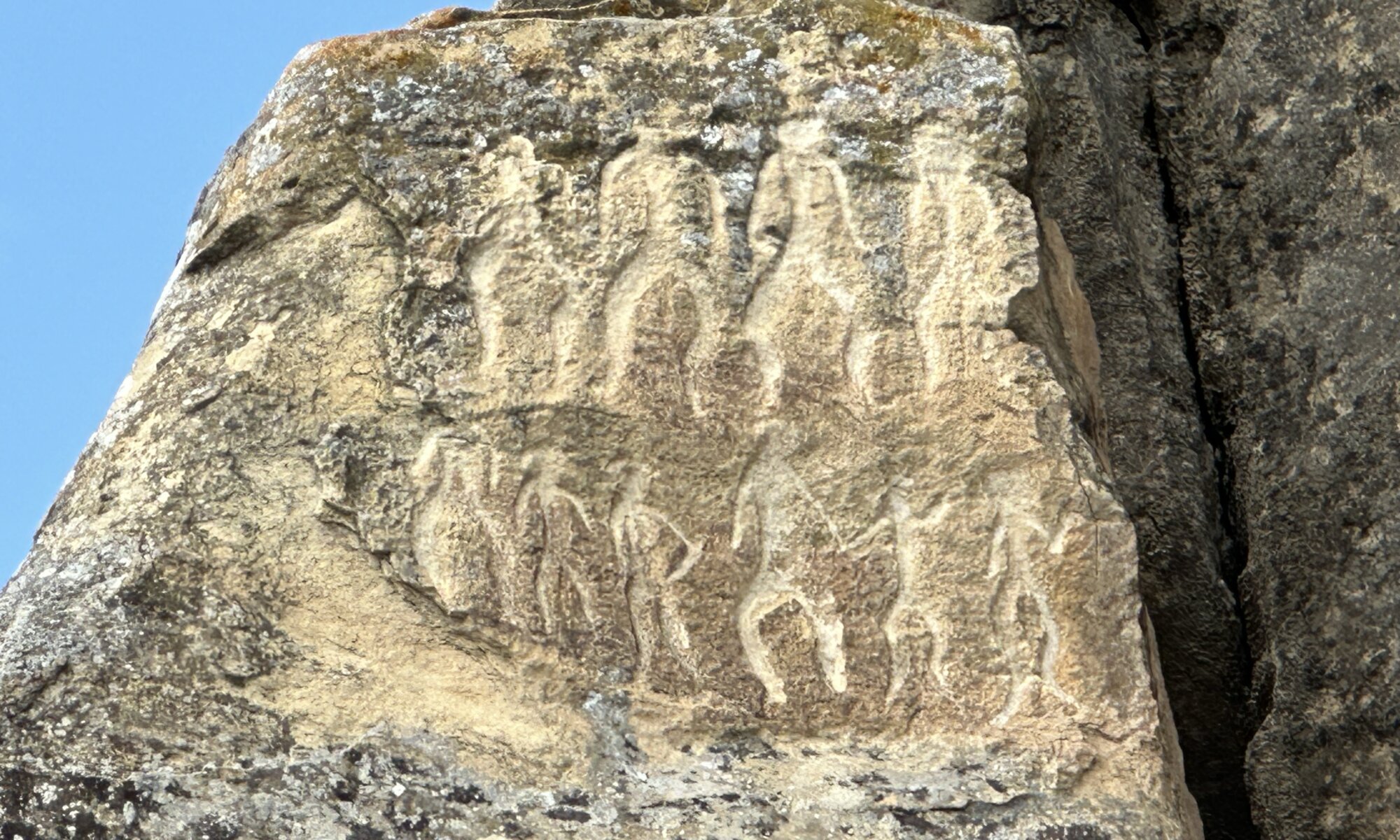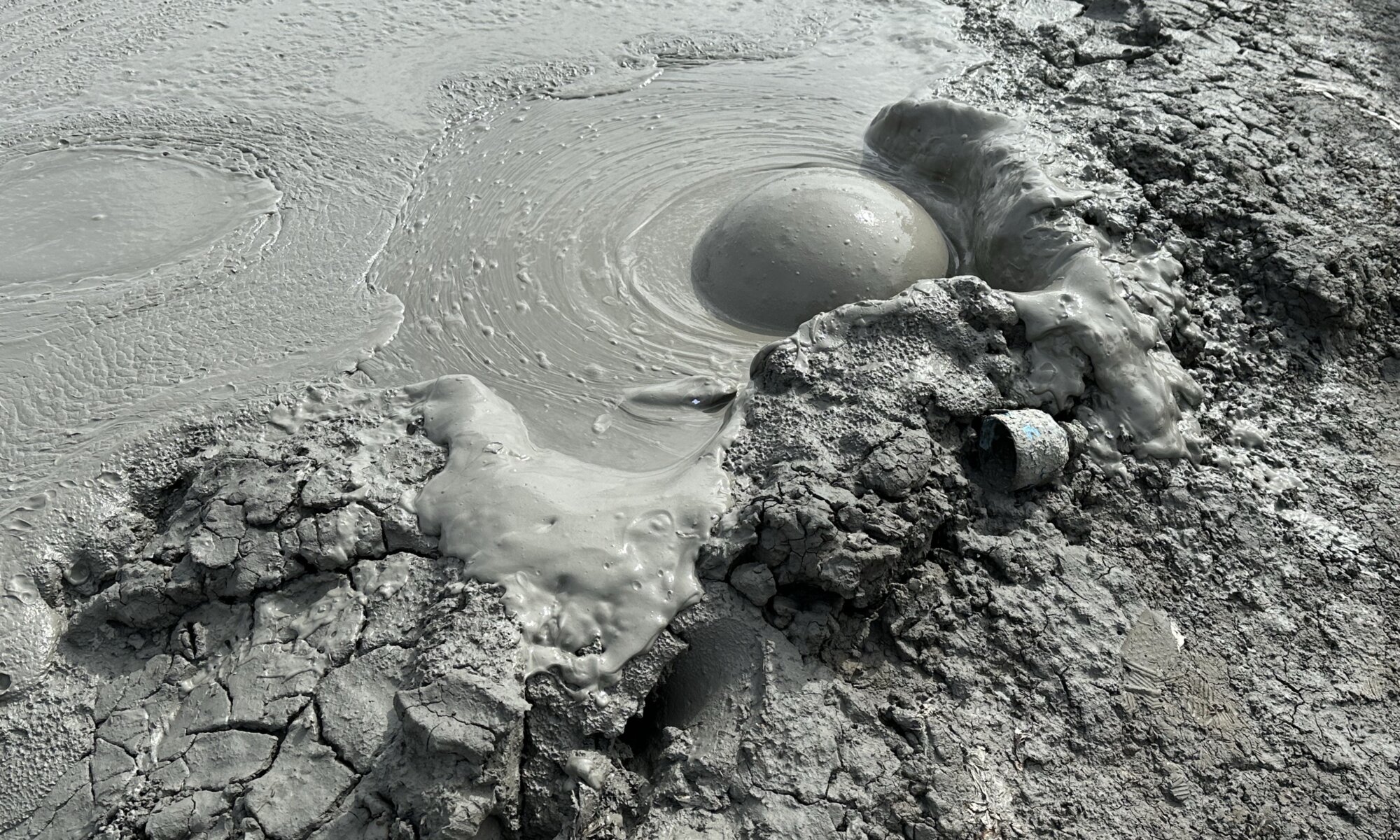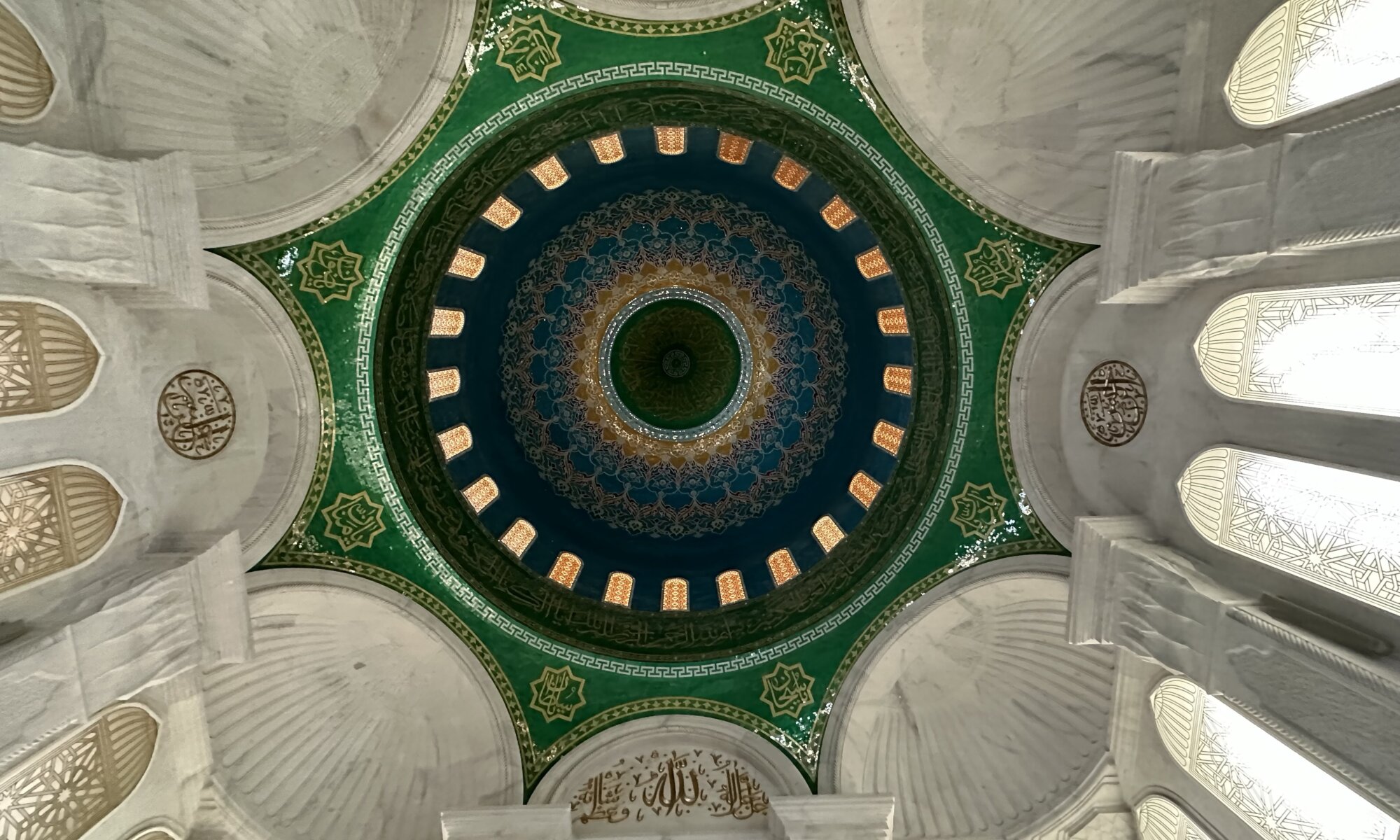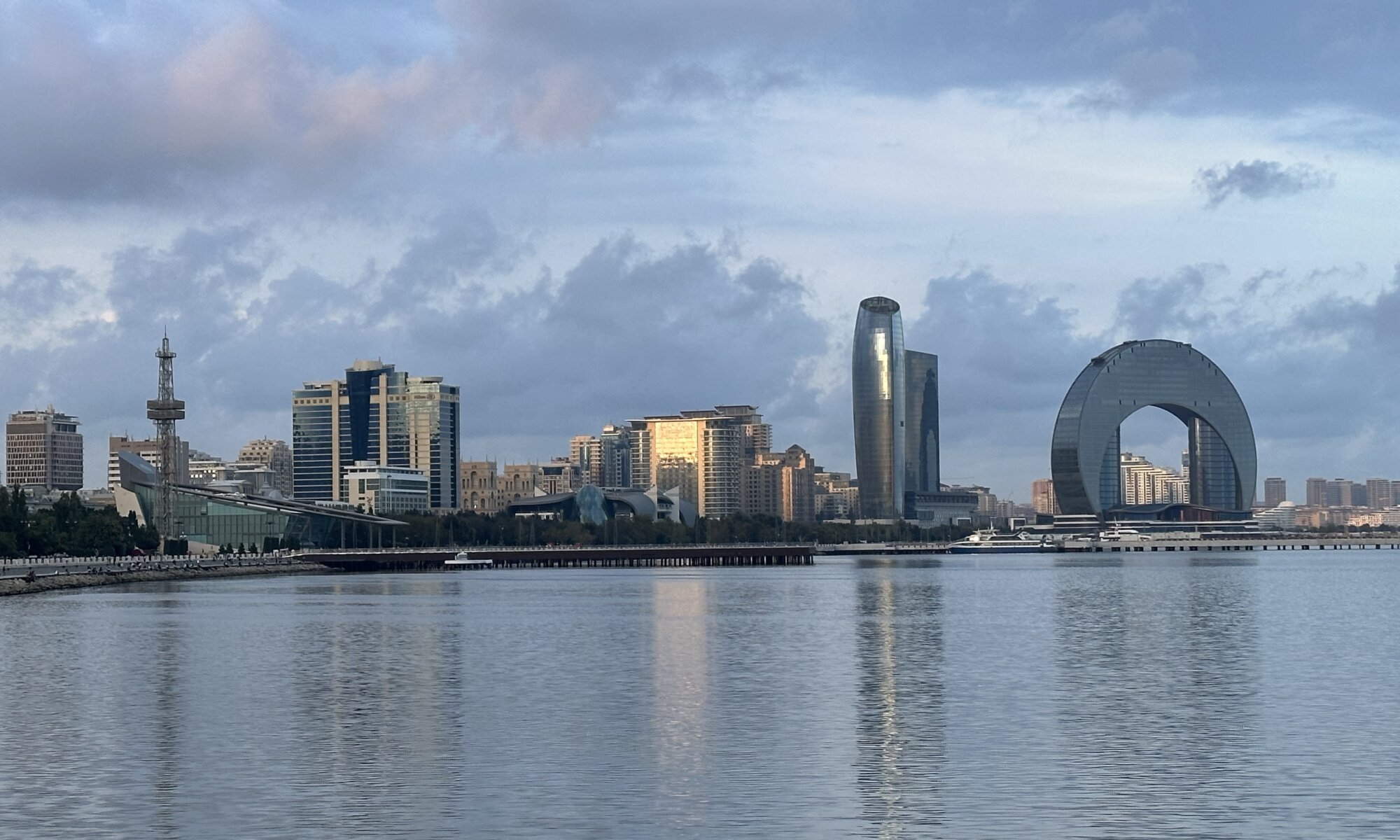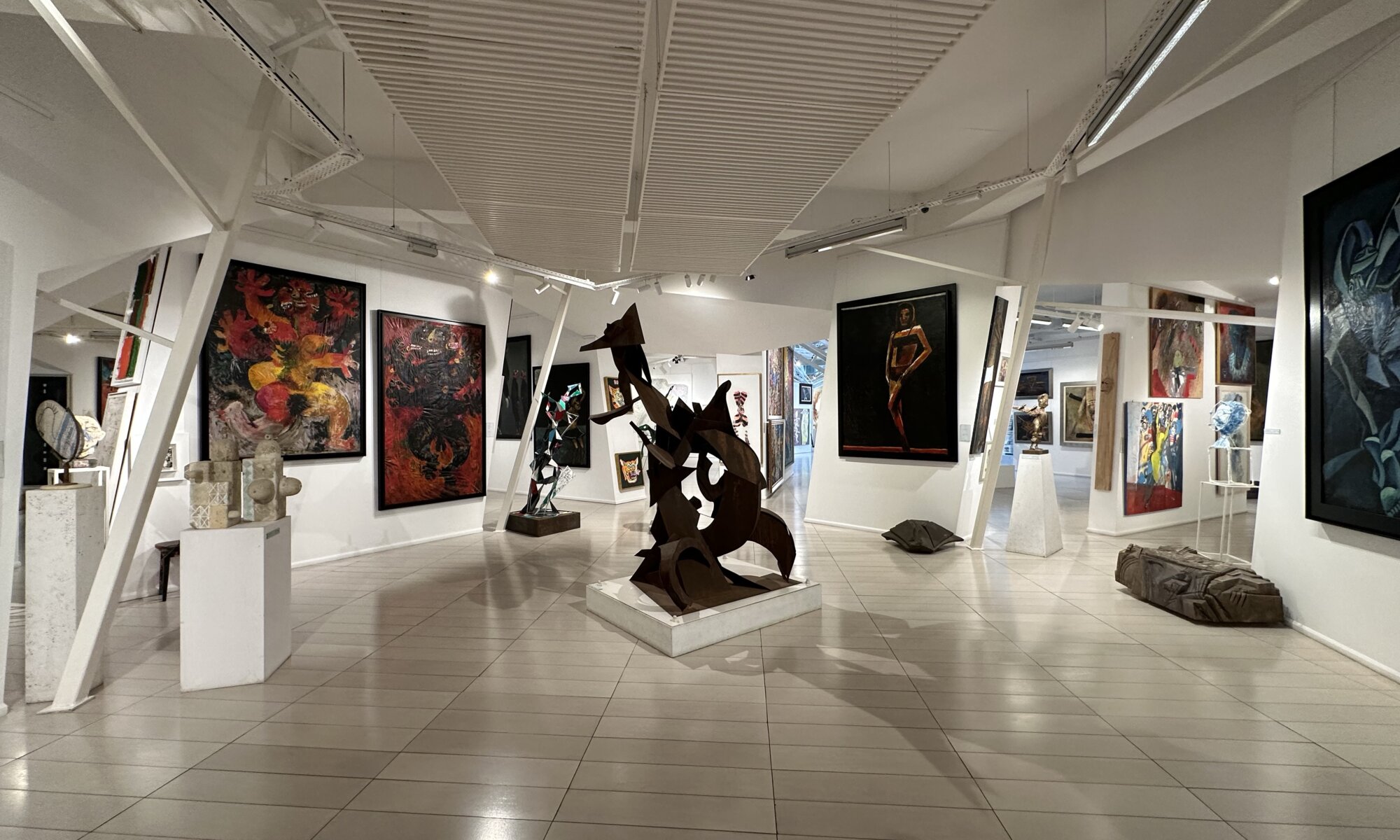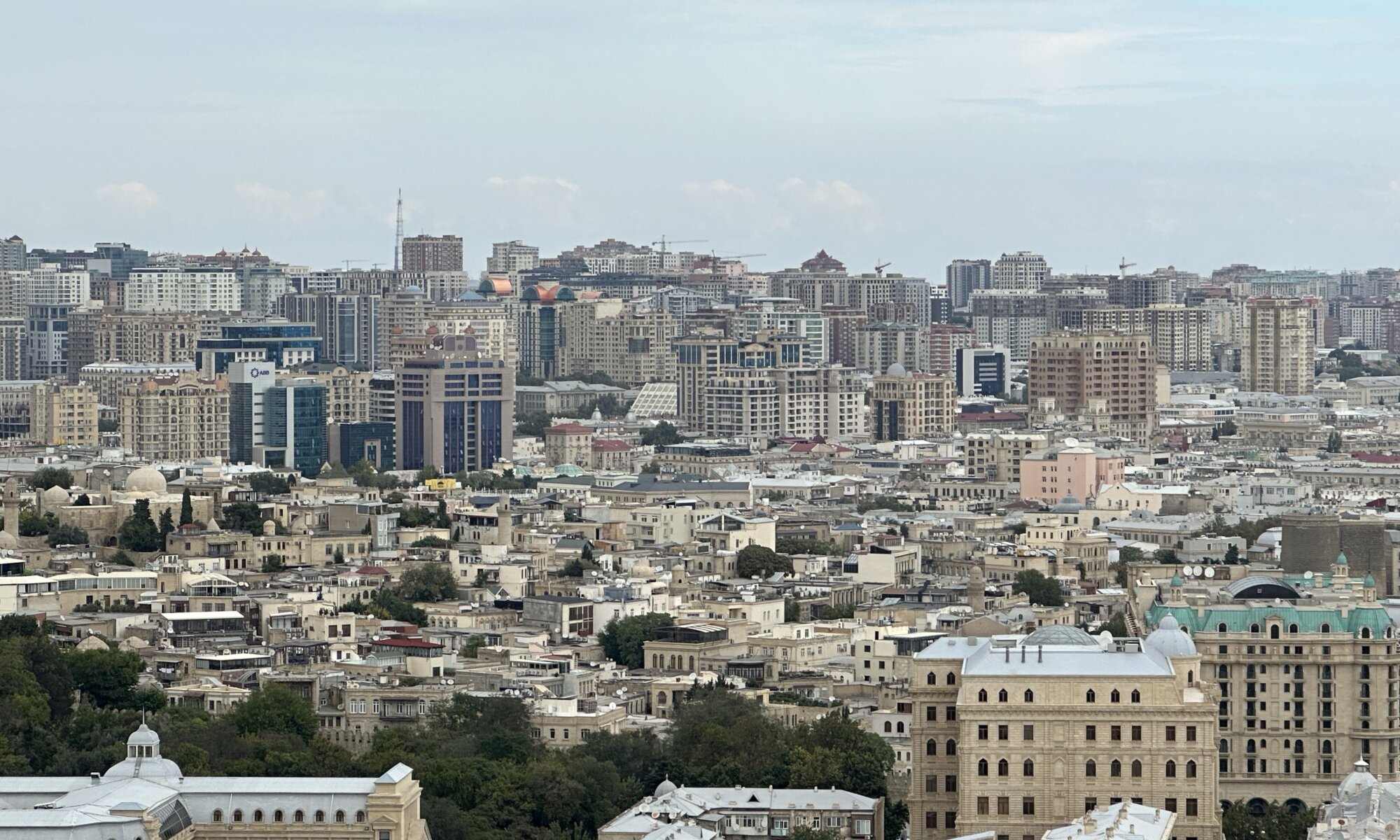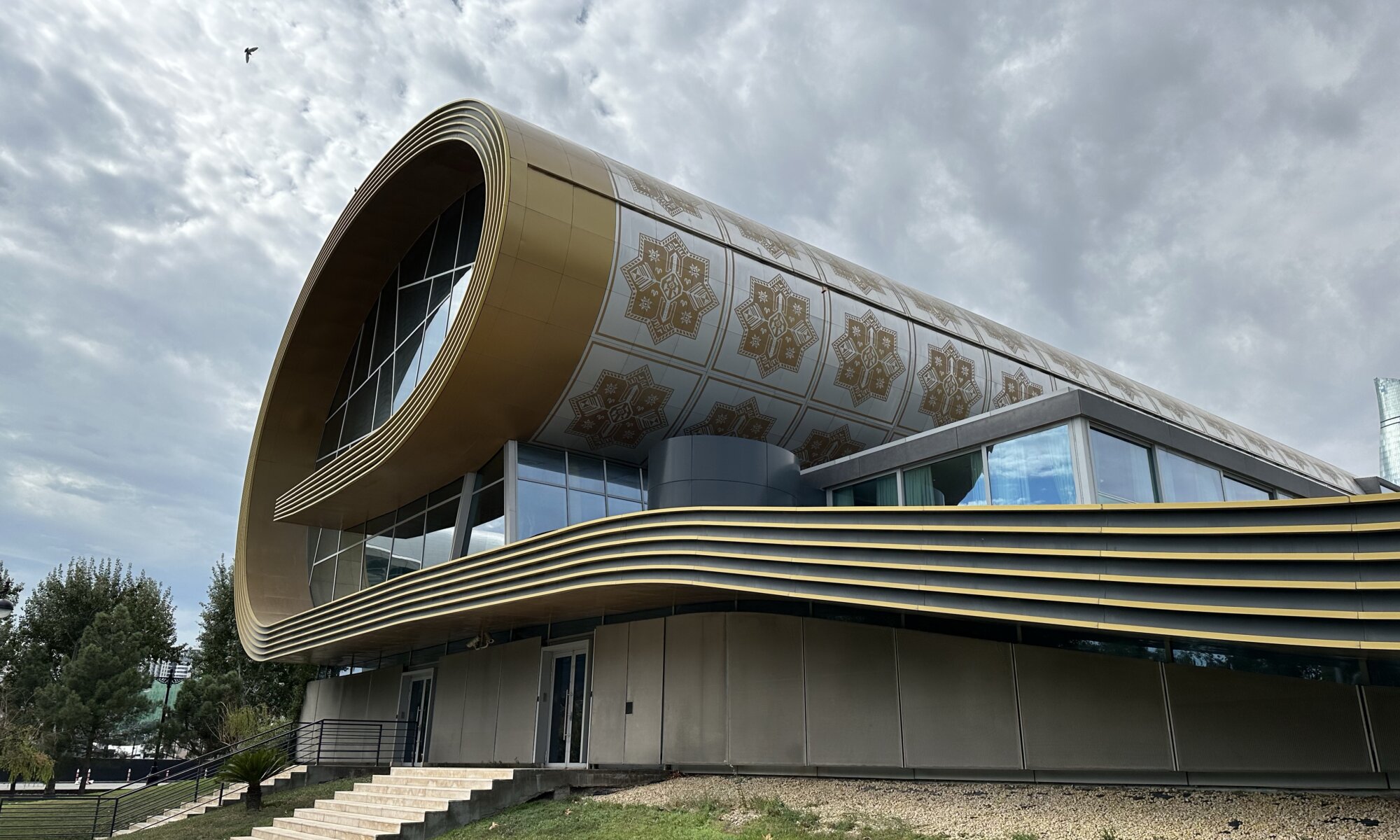Bakı is a city like no other. The capital city of Azerbaijan is shaped by the fossil resources available at the shore of the Caspian sea: oil and gas. They’re owned by the State Oil Company of Azerbaijan Republic (SOCAR) and create visible wealth and they are so widely available that they even remain unused and create continuously burning mountains and bubbling mud volcanoes. An endless number of horsehead pumps are moving around the city, three skyscrapers are shaped like flames and there is even a religion (Zoroastrianism) that worships the flame.
Continue reading “City of the winds”Atəşgah
A magic place outside of Bakı. The Atəşgah fire temple is a religious place formerly used by Zoroastrianism and Hinduism. It became so famous that even Jules Vernes and Alexandre Dumas visited it and wrote about it. Once you’ve passed the historic walls of Atəşgah you’ll see an eternal flame protected by a building at the center and rooms surrounding it but leaving a large courtyard around the fire.
Continue reading “Atəşgah”Yanar Dağ
Well, it is a burning mountain. As simple as that, as unusual as that. At Yanar Dağ near Bakı, natural gas is continuously floating out of the ground and there are different myths who first set it on fire. Now people travel to this burning mountain and admire the flames.
Continue reading “Yanar Dağ”Petroglyphs
The Qobustan area has seen human settlements rather early in history. Witnesses of that are ancient carvings from pre-historic times at the stones close to the Caspian sea, so called petroglyphs. These depictions of bulls, camels, ritual dances and riding humans date back to 5,000 to 20,000 BCE. The petroglyphs have been created by the people living in that area and they give insight into ancient life.
Continue reading “Petroglyphs”Mud volcanoes
Muddy fields decorated with volcanoes that don’t produce lava but mud, that is the Qobustan area close to Bakı. Every now and then a large bubble appears in the mud and disappears again – that is because of natural gas streaming out of the ground and through the mud. While the rest of the world tries to get methane to heat their homes it is popping up here uncontrolled and vanishes into the atmosphere.
Continue reading “Mud volcanoes”Bibi Heybat mosque
Azerbaijan is a secular country not having a stake in religious matters. There are some Russian orthodox Christians, a large Jewish community focused on Bakı – but the majority of Azeris are Muslims belonging mostly to Shia Islam. Therefore you’ll find different mosques throughout Bakı; the biggest and most modern one is the Bibi Heybat mosque outside of the city.
Continue reading “Bibi Heybat mosque”Caspian sea
The Caspian sea (Xəzər dənizi) is no sea, it is the largest lake on the planet. It has no connection to an ocean, is 371,000 square kilometres large and one kilometre deep at the lowest point. Countries around the lake are Azerbaijan, Russia, Kazakhstan, Turkmenistan and Iran. The Caspian sea is an important economic resource for those countries; it is used for fishing but especially for gaining crude oil and natural gas.
Continue reading “Caspian sea”Azerbaijani avant-garde
The Museum of Modern Art (Müasir İncəsənət Muzeyi) at Bakı is an unexpected gem aside of the areas typically visited by touristis – the old city center is far away, even the boulevard stretching along the shore ends before you reach the museum. Once you’ve found your way you’ll be rewarded with a large collection of contemporary Azerbaijani art in a very special museum building.
Continue reading “Azerbaijani avant-garde”Dağüstü
The Dağüstü park of Bakı is located on one of the highest hills of the city and close to the city center. Most people get up there to enjoy nice views on the old town (İçərişəhər) and the Caspian sea. But the area has more to offer than that: up there you’ll find the parliament building, the Flame towers, a Turkish mosque with rich decorations and the alley of the martyrs (Şəhidlər Xiyabanı) which includes around 15,000 graves.
Continue reading “Dağüstü”Xalça Muzeyi
Carpet making has a long tradition at Azerbaijan. There are different schools for that and every region has its unique style. To remember that and to built a bridge between the traditional and the new Azerbaijan the new carpet museum (Xalça Muzeyi) has been opened at Bakı in 2014 directly at the shore of the Caspian sea. The architecture of the museum is special as it copies the shape of a rolled-up carpet (or a jelly roll) – a nice idea, but it seems to make presenting the collection of carpets and rugs a bit uneasy.
Continue reading “Xalça Muzeyi”